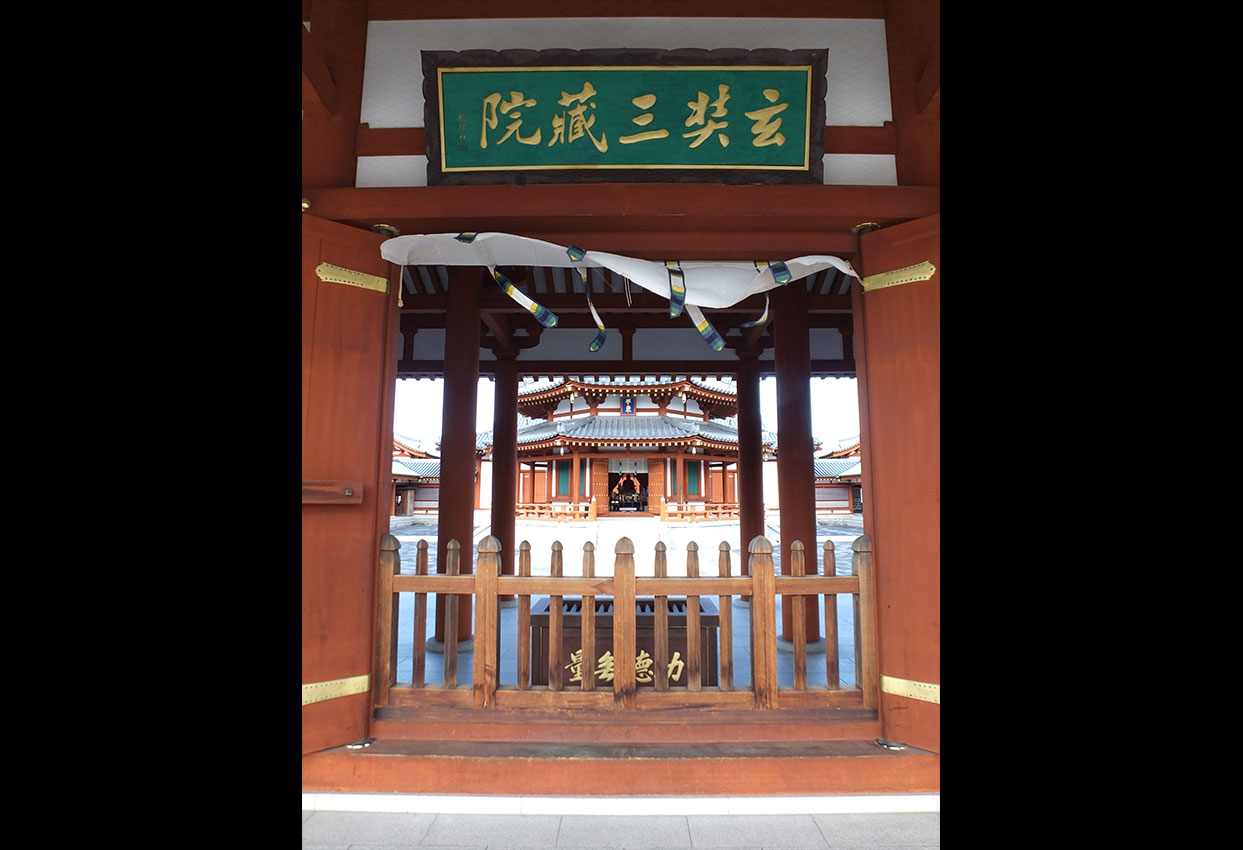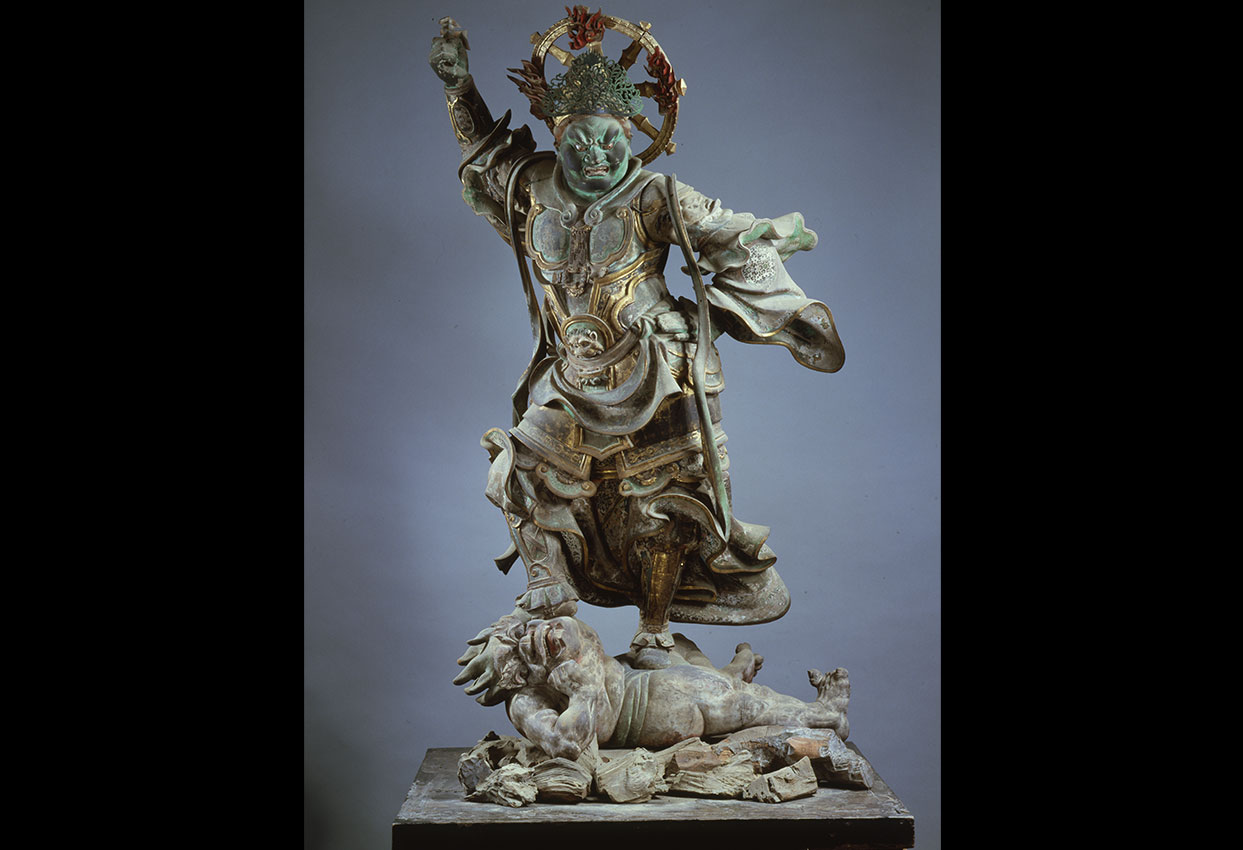15. Genjo Sanzoin Complex
This group of buildings, recently built in 1991, is dedicated to Genjo (also Genjo Sanzo) (602–664), the Chinese monk Xuanzang, who first introduced the teachings of the Hosso school to China; Yakushiji is the Japanese headquarters of this school.
As a young monk, Genjo’s travels in China made him aware of the inadequacies and discrepancies found in Buddhist texts in his homeland. While still in his twenties, he ignored an edict prohibiting foreign travel and journeyed on foot from Chang’an (present-day Xi’an) to India in search of Buddhist sacred texts. Despite great difficulties, which included being attacked by robbers, he vowed never to return to China until his mission was completed. For many years he made his way to and around India, visiting Buddhist sites, remains, and relics and gathering Buddhist texts, in particular those relating to the Yogachara school, known in Japan as Yuishiki, or Hosso. Having covered a total of 30,000 kilometers (equal to three-fourths of the world’s circumference), he returned to China some 19 years after embarking on his mission, bringing hundreds of Buddhist scriptures with him. It was 645, and with the help of students and collaborators from around East Asia and support from the Tang emperor, he set up a translation bureau and devoted the next 19 years to translating the texts into Chinese. He is credited with creating 1,335 scrolls, among them the Heart Sutra, which is highly revered in East Asian Buddhism generally.
After his pilgrimage, Genjo’s prime objective was to spread the doctrines of the Yogacara school in China, a task that he entrusted to one of his disciples, who is known in Japan as Jion Daishi. Through Jion (Ch. Kuiji), the Chinese Hosso school was born, though it was a Japanese monk named Dosho, who studied under Genjo after traveling to China in 653, who ultimately brought the school to Nara.



